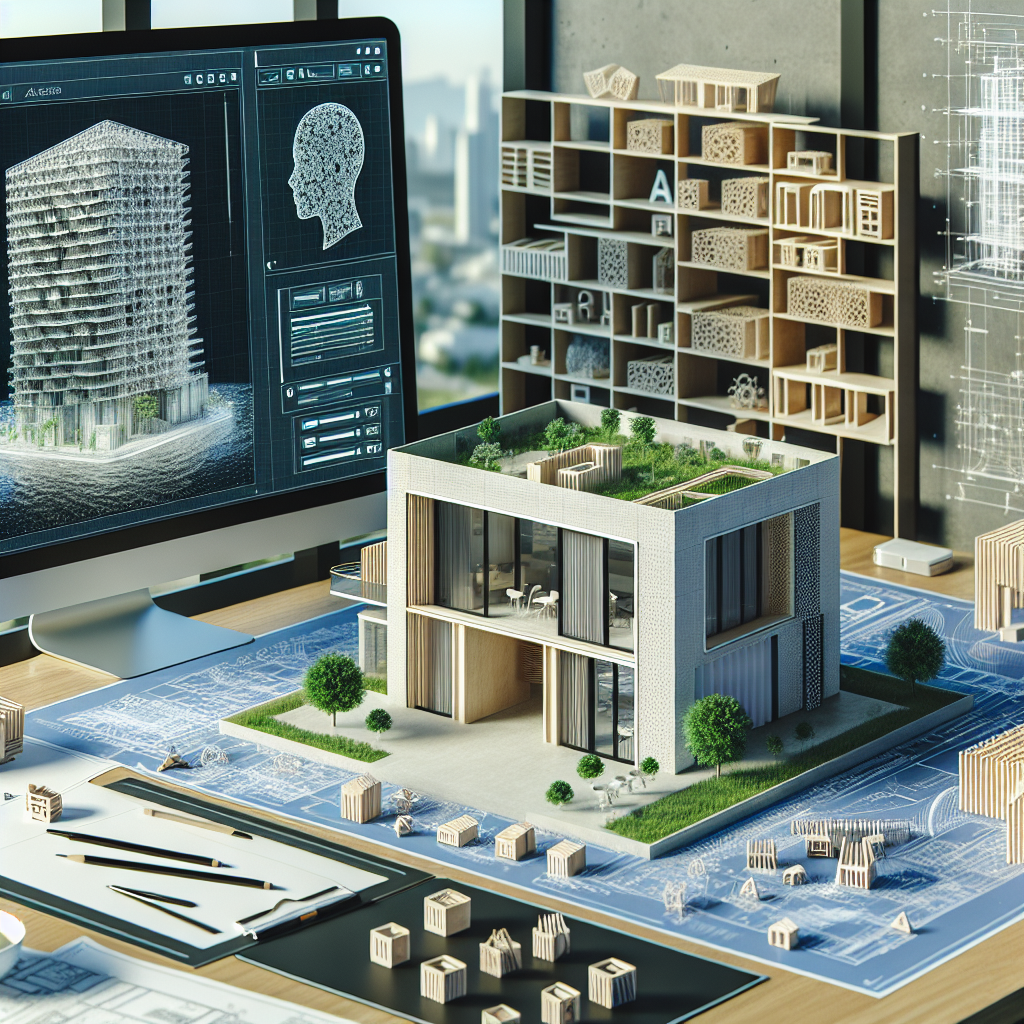Generative artificial intelligence (AI) is revolutionizing the field of architecture by offering designers new tools and techniques to explore creative possibilities, optimize designs, and streamline the design process. This technology allows architects to generate unique and innovative designs that may not have been possible with traditional methods. In this article, we will explore the benefits of using generative AI in architecture and how it is transforming the way buildings are designed and constructed.
Benefits of Using Generative AI in Architecture:
1. Exploration of Design Possibilities:
Generative AI allows architects to explore a vast range of design possibilities by generating and evaluating numerous design options quickly and efficiently. This technology can analyze complex data sets and parameters to create designs that meet specific criteria and constraints. By using generative AI, architects can push the boundaries of traditional design and create innovative and unique structures.
2. Optimization of Designs:
Generative AI can help architects optimize their designs by analyzing various design parameters such as building orientation, material selection, energy efficiency, and structural integrity. This technology can generate designs that are not only aesthetically pleasing but also functional and sustainable. By utilizing generative AI, architects can create designs that are optimized for performance, cost, and environmental impact.
3. Streamlining the Design Process:
Generative AI can streamline the design process by automating repetitive tasks and generating design options in a fraction of the time it would take using traditional methods. This technology can help architects save time and resources by quickly generating and evaluating design alternatives. By using generative AI, architects can focus on the creative aspects of design rather than getting bogged down in tedious tasks.
4. Enhancing Collaboration:
Generative AI can enhance collaboration among architects, engineers, and other stakeholders by providing a common platform for sharing and evaluating design options. This technology can facilitate communication and decision-making by generating visual representations of design alternatives that can be easily shared and discussed. By using generative AI, architects can collaborate effectively with team members and clients to develop designs that meet their needs and expectations.
5. Improving Design Quality:
Generative AI can improve the quality of architectural designs by analyzing and optimizing various design parameters. This technology can generate designs that are efficient, sustainable, and visually appealing. By using generative AI, architects can create designs that are optimized for performance, functionality, and aesthetics.
FAQs about Generative AI in Architecture:
1. How does generative AI work in architecture?
Generative AI in architecture works by using algorithms to generate and evaluate design options based on specific criteria and constraints. This technology can analyze complex data sets and parameters to create designs that meet the requirements of the project. Generative AI can generate numerous design alternatives quickly and efficiently, allowing architects to explore a wide range of design possibilities.
2. What are the key benefits of using generative AI in architecture?
Some key benefits of using generative AI in architecture include the exploration of design possibilities, optimization of designs, streamlining the design process, enhancing collaboration, and improving design quality. Generative AI can help architects push the boundaries of traditional design, optimize their designs for performance and sustainability, save time and resources, facilitate communication and decision-making, and create innovative and unique structures.
3. How can generative AI enhance collaboration among architects and other stakeholders?
Generative AI can enhance collaboration among architects, engineers, and other stakeholders by providing a common platform for sharing and evaluating design options. This technology can generate visual representations of design alternatives that can be easily shared and discussed, facilitating communication and decision-making. By using generative AI, architects can collaborate effectively with team members and clients to develop designs that meet their needs and expectations.
4. How does generative AI improve the quality of architectural designs?
Generative AI can improve the quality of architectural designs by analyzing and optimizing various design parameters such as building orientation, material selection, energy efficiency, and structural integrity. This technology can generate designs that are efficient, sustainable, and visually appealing. By using generative AI, architects can create designs that are optimized for performance, functionality, and aesthetics, resulting in high-quality architectural projects.
In conclusion, generative AI is transforming the field of architecture by offering architects new tools and techniques to explore creative possibilities, optimize designs, and streamline the design process. This technology is revolutionizing the way buildings are designed and constructed by enabling architects to generate unique and innovative designs that may not have been possible with traditional methods. By leveraging generative AI, architects can push the boundaries of design, optimize their designs for performance and sustainability, save time and resources, enhance collaboration among stakeholders, and improve the quality of architectural projects. Generative AI is a powerful tool that is reshaping the future of architecture and allowing designers to create buildings that are innovative, functional, and sustainable.

